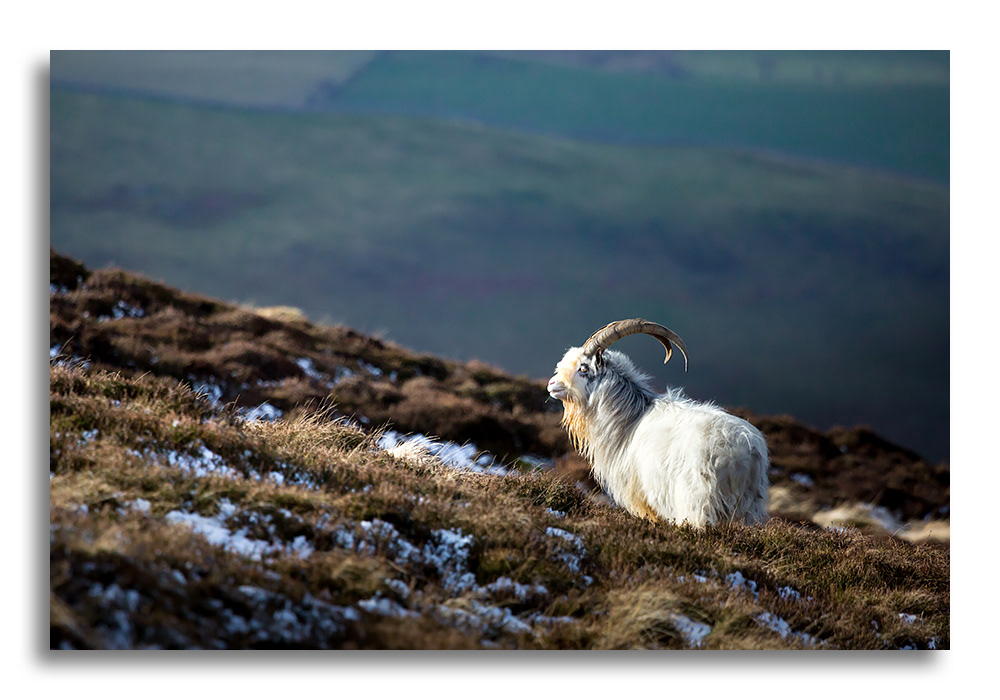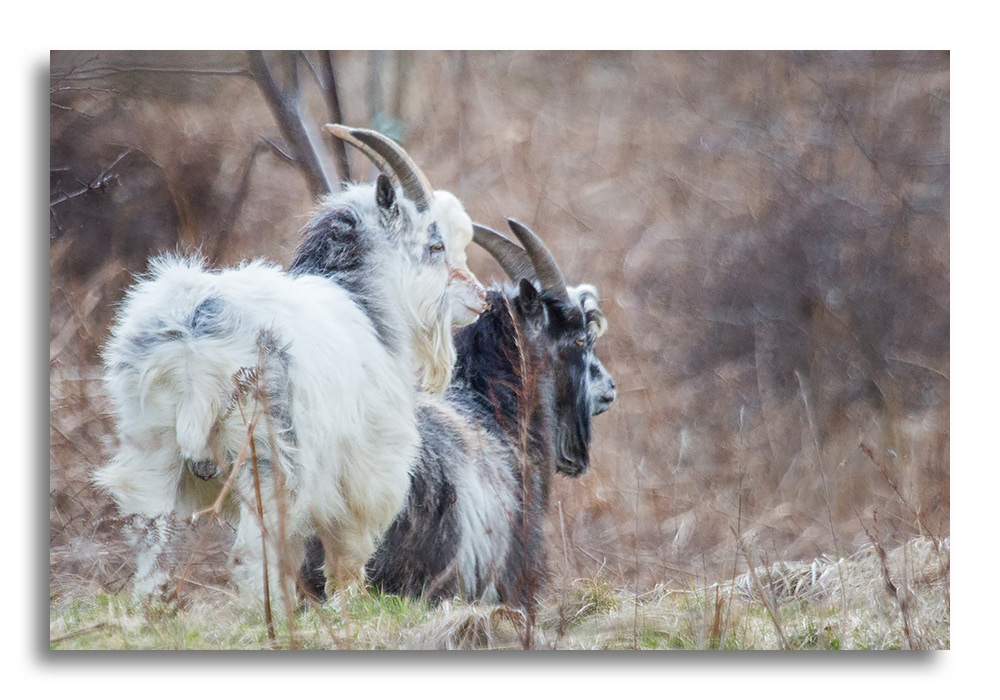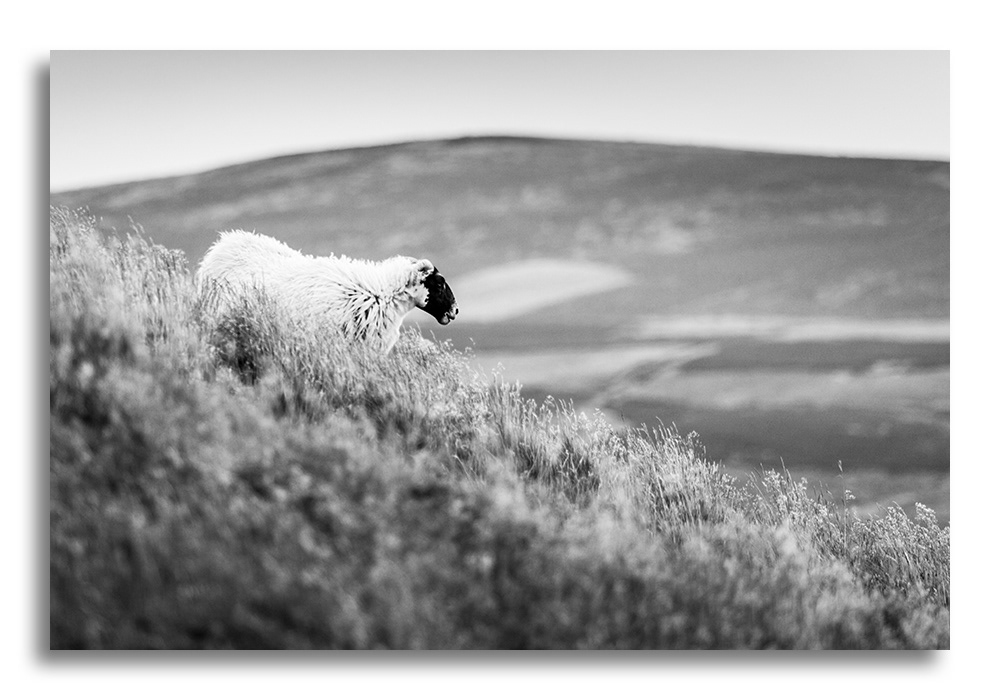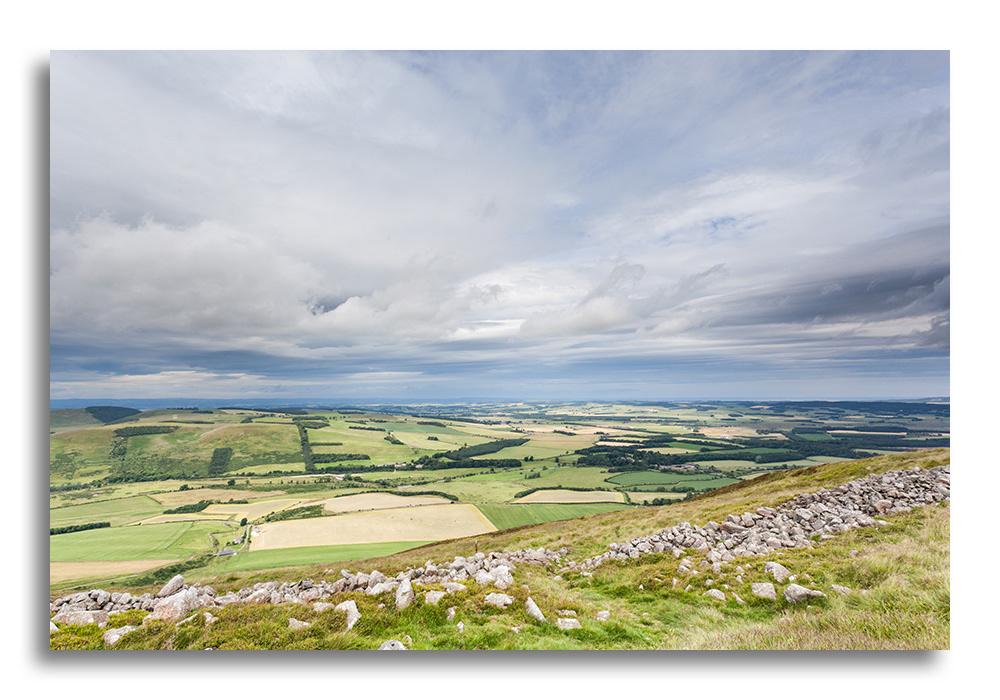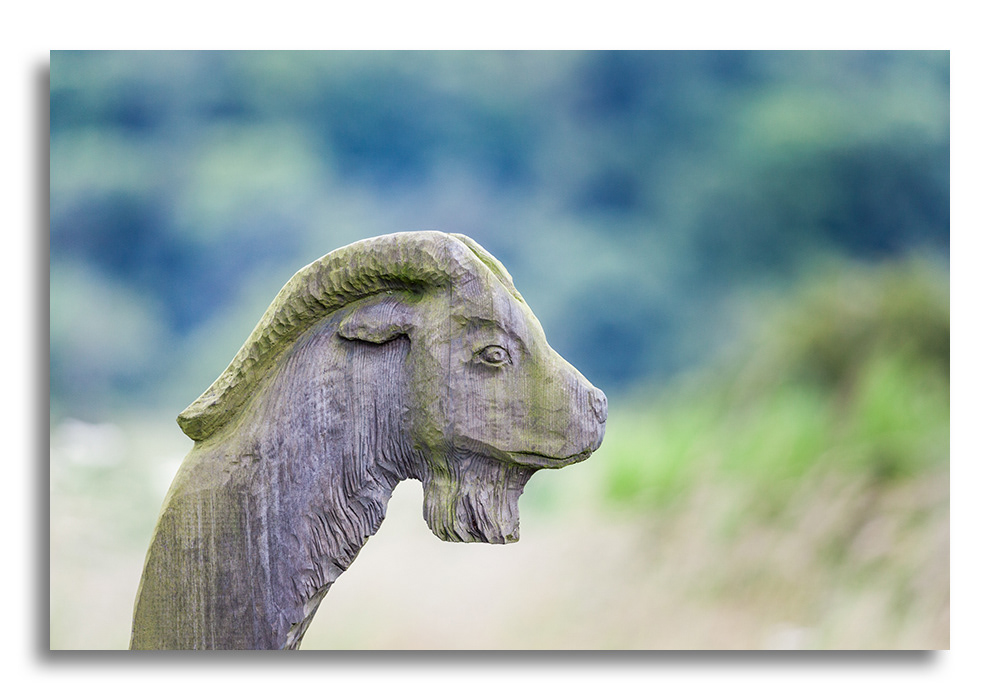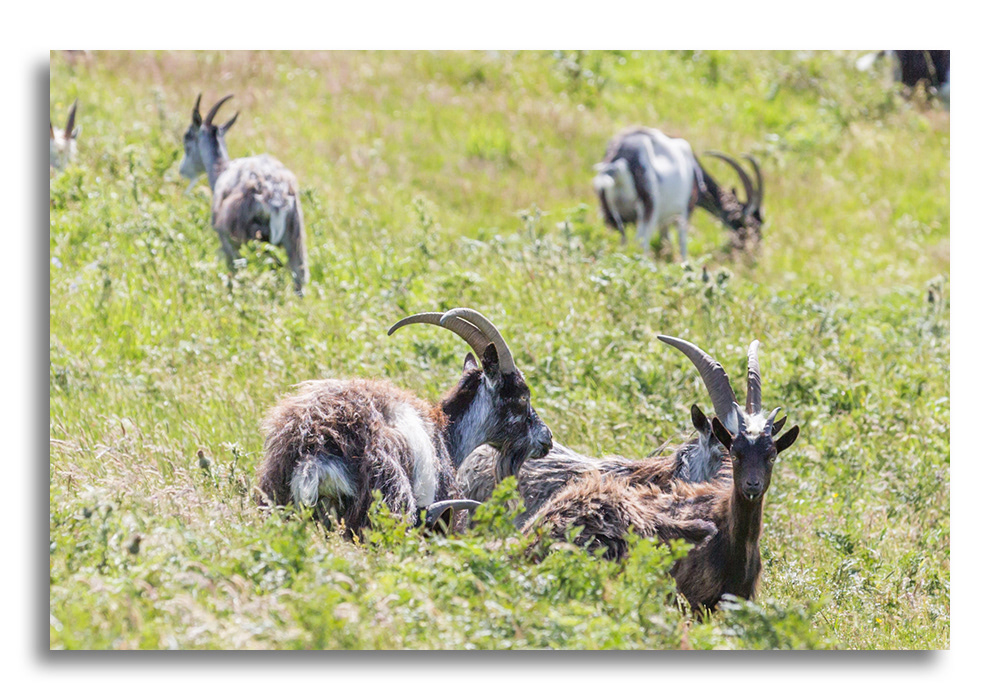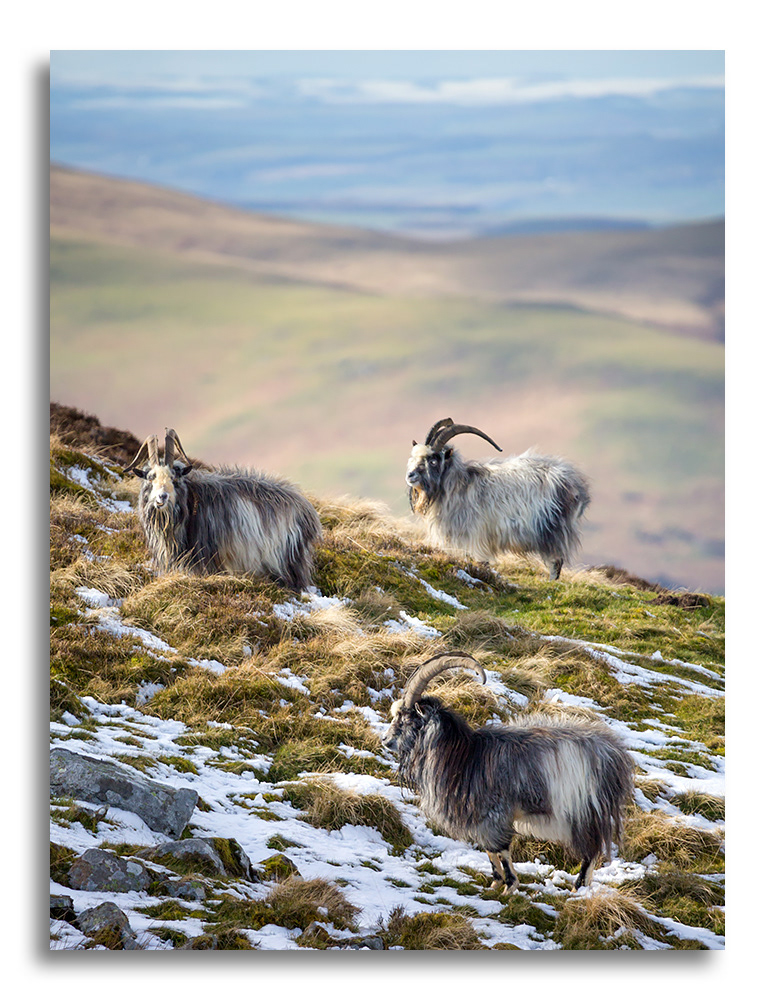If you venture off St Cuthbert's Way onto the quieter footpaths that lace the remote hills above College Valley near Yeavering Bell in north Northumberland, then, with any luck, you may see the silhouette of a small group of Cheviot Wild Goats on the skyline. And what a treat to see they are - they are such enigmatic characters, icons of wild spaces.
Once spotted, Cheviot Wild Goats are easily distinguished from the Blackface sheep they share the College Valley hills with by their slightly trimmer and smaller stature, their impressive horns, goatee beards and their often-mottled coats. Advice has it that you may smell them before you see them, however I've never found that to be the case and have never caught a whiff of goat on the breeze, even when I've been within 20 metres or so of them, the closest I've been so as to respect the space of these elusive (or so I used to think!) wild animals.
Goats have survived and roamed wild and free in the Cheviot foothills for thousands of years and are believed to have sustained Neolithic Farmers in Britain (more information on Northumberland National Park's website here).
College Valley is a personal favourite place to visit in Northumberland, for its peace and quiet, wildlife and superb walking trails. I've been venturing up for several years, often staying in the valley, which has excellent accommodation options for anyone wanting to get away from it all and enjoy the valley and it's surrounding hills College Valley – A Wild and Wonderful area of Northumberland (college-valley.co.uk).
It took many visits and some years, though, before I had my first wild goat encounter, so I'd come to think I may never see one. It was while doing a low level walk along the footpath that traces the south side of College Burn that I first spotted a wild goat - two in fact! I froze in my tracks, the encounter was not expected - they looked suitably unimpressed by me - I managed to regain my composure just in time to get a photo or two, and then they were off, vanishing into the scrubby woodland beside the Burn. I was ecstatic to have seen them, convinced that that was it, I'd had my luck and would never see them again.
Fast forward a few years and Covid struck and we all headed into lockdown. We know that while we were staying at home, wildlife thrived, so, when we were allowed to travel again, I headed straight to College Valley to try my luck again and specifically went looking for wild goats. Turns out the goats had claimed the valley and the surrounding roads, for, as I was driving along the winding country road beside the ancient site of Ad Gefrin, I could see wild goats in the field under Yeavering Bell, as plain as day - and then a small group of them leapt over the stone wall and onto the road and ran along ahead of me for a stretch.
I headed up again a few weeks later and it seemed they'd retreated to the hills now that people were back on the roads and valley footpaths. I parked up in the layby at Ad Gefrin and got chatting to a couple who were holidaying in Northumberland. They asked for tips so I said to be sure to look out for the wild goats and that they may see them "if they were lucky!". We were heading along the same footpath and they caught up with me as we turned off the main path onto St Cuthbert's Way as it passed through a sheep field and started climbing in the pass between Yeavering Bell and the flanks of Easter Tor. There in the sheep field weren't sheep - no, instead there were probably about 50 wild goats - I couldn't believe it! The couple turned to look at me in bewilderment - "I thought you said they were elusive?!". And so it turns out that maybe a better word for wild goats is fickle! And long may they be fickle, wild and free and completely unimpressed by you and me - they are magnificent creatures, and I'm very glad to have been able to roam in this beautiful place with the Cheviot Wild Goats.

